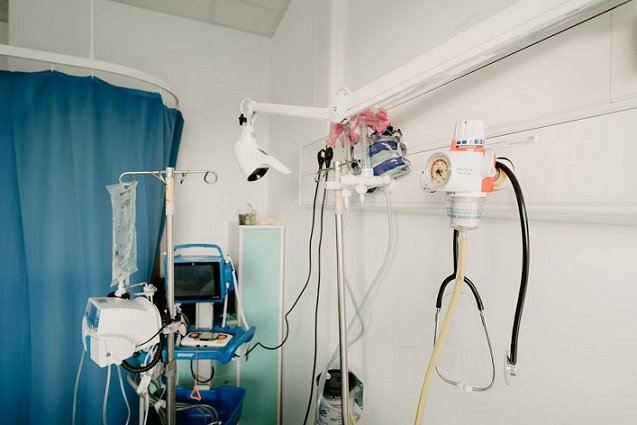
Are Implantable Ports Safe? The Bard PowerPort Lawsuit Says Otherwise
The implantable port is a lifeline for cancer patients and others needing frequent IV treatments. But a growing number of lawsuits claim Bard PowerPort ports can break apart inside the body, lodging razor-sharp fragments in the heart or lungs. Victims and their families are asking if convenient access to veins comes with a hidden risk of fatal complications.
What Is an Implantable Port?
An implantable port, also known as a port or portacath, is a small medical device that is placed under the skin. It has a thin tube called a catheter that is attached to a small reservoir or disk. The port allows doctors and nurses to give medications, fluids, and blood products or collect blood samples through a vein.
The catheter is a silicone tube that is thin, pliable, and soft. It is often inserted surgically beneath the skin in the upper arm or chest region. One end of the catheter enters a large vein near the heart, while the other end connects to the port disk that sits underneath the skin.
The port disk is about the size of a quarter or half-dollar coin. It is made of plastic or metal and sits just under the skin where it forms a small, barely noticeable bump. This port disk area is where a needle accesses the catheter for medical treatments or tests.
Ports can be used to administer things like chemotherapy, antibiotics, blood transfusions, or intravenous (IV) fluids. They are also commonly used for frequent blood draws needed for testing or monitoring health conditions. Using a port avoids the need for repeated needle sticks in arm veins.
The port is designed to remain in place for an extended period of time, sometimes years. It only requires minor care and allows for repeated painless access to the bloodstream. Ports are especially helpful for people who have difficult vein access due to illness, previous damage, or other medical factors.
To place the port, a small surgical procedure is carried out. The healthcare provider will make two small cuts in the skin, called incisions. The first creates a pocket under the skin for the port, about 3 to 4cm long.
A smaller incision above this is where they insert the catheter into the vein, usually less than 2cm long. They will then tunnel the catheter under the skin to the selected vein access point, usually in the upper chest or arm area. The port disk is surgically placed just under the skin at the end of the catheter tube.
Complications from Implantable Ports like the Bard PowerPort
Implantable ports like the Bard PowerPort can potentially lead to minor and severe complications according to manufacturer instructions. A dangerous consequence known as “pinch-off syndrome” happens when the catheter becomes crushed between the ribs and collarbone, breaking the device and creating blockages or fractures.
Patient reports have indicated the PowerPort may unexpectedly fracture, leading to vascular damage and injuries. Infection originating at the port insertion site is a complication as bacteria may enter the body if the device fractures or degrades, resulting in life-threatening systemic infections.
Design flaws that make fracturing more probable also increase the risk of port migration post-implantation, impacting flexible tubing inserted into veins. If fracturing occurs, emergency port removal surgery may be necessary.
In March 2020, the U.S. Food and Drug Administration issued a Class 2 recall for three PowerPort models. The recall identified a risk that the device could contain an incorrect catheter attachment tip, prolonging insertion procedures and incrementally increasing the risk of minor tissue injury.
However, current patient lawsuits against the manufacturer allege that the PowerPort design may result in fractures and migrations. This can lead to blood clots, infections, and other serious health issues, sometimes resulting in fatalities.
They claim the company failed to make necessary design changes or provide adequate warnings. They also claim the company should have initiated a further recall for these alleged defects instead of the tip issue. Nonetheless, the lawsuits have nothing to do with the recall for 2019–2020.
Potential Claims and Evidence Involving Bard PowerPort Devices
Some people who have received Bard PowerPort implantable port devices have reported issues that may be related to design or manufacturing defects. These individuals allege that flaws in the device can cause the catheter to fracture, resulting in severe and persistent pain. Other reported complications include serious injuries.
As a result of these claims, some individuals have filed product liability lawsuits against the manufacturer. Those injured by the device are seeking compensation for damages. In response, the Judicial Panel on Multidistrict Litigation consolidated many of these cases into multidistrict litigation (MDL).
According to TorHoerman Law, the US District Court for the District of Arizona serves as the principal location for the Bard PowerPort MDL.
Evidence that may be considered in these lawsuits includes medical records, treatment documentation, prescription history, and employment impacts. Additionally, first-hand accounts of injuries and their progression through written statements, photos, or videos may also be relevant. Witness testimony from family or friends could also provide relevant information.
When pursuing legal action, determining damages is an important part of the process.
Damages represent the total losses and costs incurred by an individual as a direct consequence of an injury allegedly caused by a defective medical device. This encompasses both economic damages like medical bills and lost wages, as well as non-economic damages for things like pain and suffering.
Reports indicate that the potential Bard Power Port lawsuit settlement amount in these cases could range from $10,000 to over $100,000. The amount depends on the specifics of the claim, the litigation timing, and the progress. The ultimate amount would depend on an individual’s full circumstances and claimed damages.
Alternatives to Implantable Ports
Peripheral IVs (or IVs)
Short-term intravenous (IV) access is often obtained through a peripheral IV placement. This involves inserting a thin and flexible catheter into a vein in the hand or arm.
A healthcare professional will place the IV catheter and secure it with a transparent dressing. Peripheral IVs have limitations as they are only intended for temporary use lasting a few days. They are well-suited for brief intravenous therapy needs.
Central Venous Catheters (CVCs)
Many central venous catheters (CVCs) consist of a pliable, bendable tube terminating in or near a major vein leading to the heart, known as the superior vena cava (SVC). While not everyone undergoing cancer therapy will require a CVC, they can be advantageous under certain circumstances.
A CVC helps in cases where your veins are delicate or challenging to access or if one or both arms are unsuitable for IV placement. Additionally, it might help when your treatment is anticipated to extend over several months or more or if your veins have incurred damage from previous treatments.
Alternatively, it may be necessary if you necessitate numerous medications and treatments concurrently, each demanding IV access. Lastly, a CVC may be needed if you require total parenteral nutrition (TPN) and liquid nutrition administered via IV.
Midline Catheters
Although shorter and do not extend to the superior vena cava (SVC), midlines resemble CVCs. They may be used when a person needs medication for several days or weeks or has delicate veins.
There are situations when a midline is favored over a CVC since infection is less common with one. Nevertheless, medications that can harm veins or those that need a CVC (such as complete parenteral nutrition or TPN) cannot be administered through midlines.
FAQs
1. What are the potential issues with a Port-a-Cath?
A: Sometimes, the catheter inside the portacath can become partially or fully obstructed. This obstruction can hinder the administration of treatment or the drawing of blood tests. To address this, the catheter may undergo flushing with a solution to clear the blockage, or in severe cases, the entire port may need removal.
2. Does a Port-a-Cath contain metal?
A: A Port-a-Cath is a device implanted beneath the skin for continuous drug delivery. It consists of a catheter and a reservoir made of silicone or metal.
3. How can you tell if there’s a problem with your port?
A: If you notice signs of infection, such as increased pain, swelling, warmth, or redness near the port or red streaks extending from the port, it’s crucial to contact your doctor immediately.
In summary, implantable ports benefit patients requiring frequent IV treatments. However, growing concerns over suspected design flaws in models like the Bard PowerPort highlight the need for further investigation and potential improvements.
Patients deserve safe and effective medical devices, so manufacturers must address issues identified by users and regulators to ensure safety remains the top priority. Continued research and oversight can help resolve uncertainties and protect patient well-being.
















